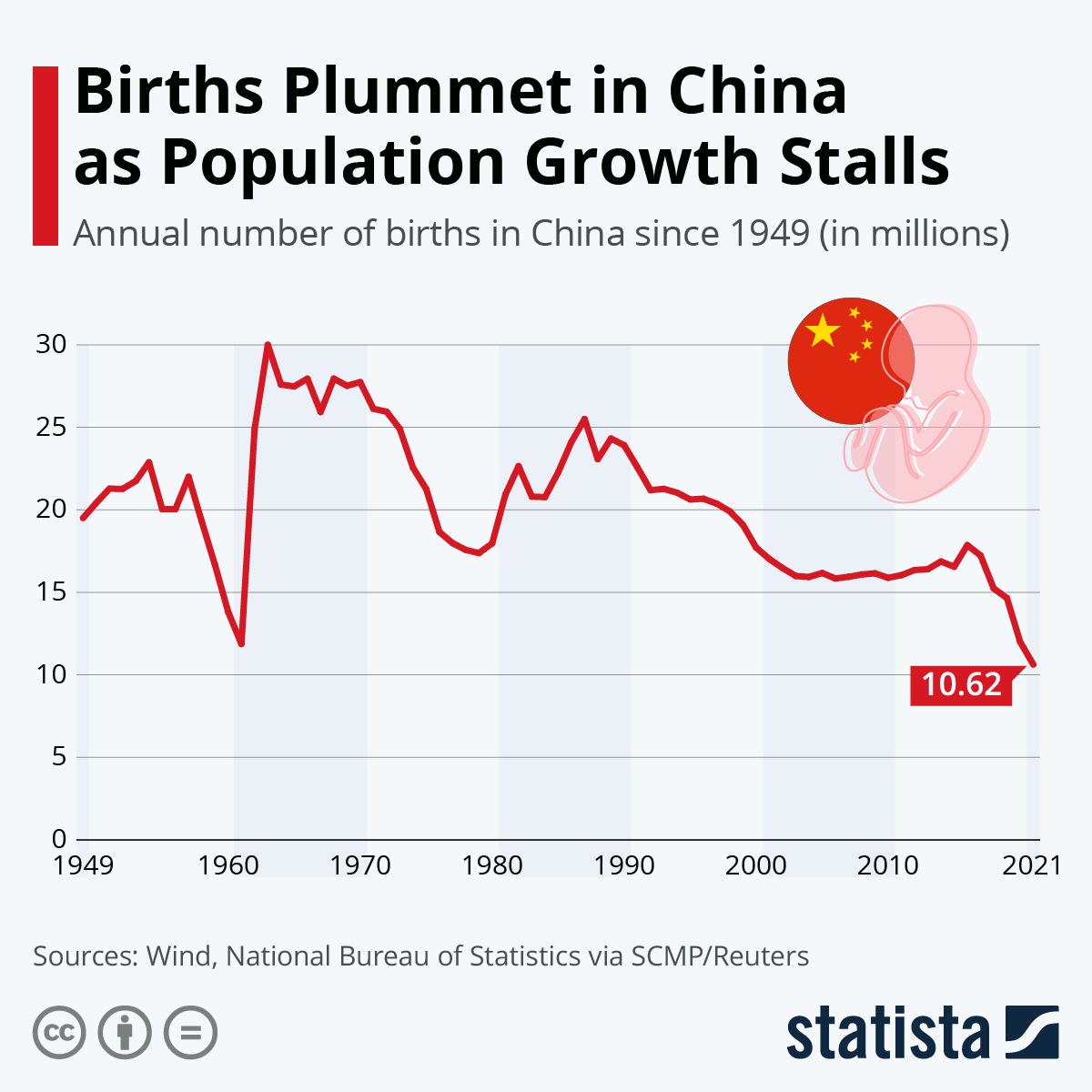After China's once-in-a-decade census had already corrected the number of births in the country downwards considerably in 2020, the latest release from the National Statistics Bureau of China (NBS) shows that in 2021, even fewer babies were born in the country.
The statistic only counted 10.62 million births in 2021, down from twelve million in 2020. Meanwhile, China's population stagnated at around 1.41 billion people.
The country's fertility rate stood at 1.3 children per woman in 2020. It has been below the 2.1 threshold necessary for a stable population since the 1990s. Despite the early warning signs, China only scrapped its long-standing one-child policy in 2016, as fear of overpopulation gave way to fear of aging societies.
Ning Jizhe, head of the NBS, attributed the falling fertility rate to China's economic and social development. Countries tend to experience lower birth rates in line with economic development as increased education access and concentration on careers become new priorities for the population. That is certainly the case elsewhere in Asia, particularly in Japan and South Korea where birth rates have fallen to new lows. The situation is especially concerning in South Korea where there were more deaths than births last year.





















